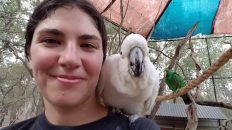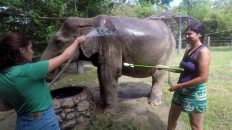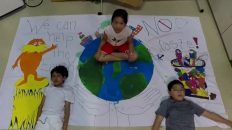This vlog post has been a long time coming. I landed in the USA on October 2nd, and since then have been doing much activism and learning. 4 months ago, I posted a few tidbits I learned, as well as different events I was going to in my community to advocate for the climate. Now, after the experiences I have had, and taking on a new role as an educator of kids in 5th/6th grade at Rafael Hernandez School with a label of “Medically Disabled”, I am starting to bring together my passions of education, environment, inclusion, and peace.
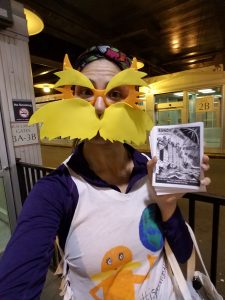 I do not know exactly WHAT will happen or what will come about through this process – maybe a curriculum, maybe a garden, maybe a mindfulness program, or all of the above! Either way, it is invigorating to be in a classroom, and have connections to organizations, colleagues, and friends who are passionate, intelligent, and supportive of whatever I love to do.
I do not know exactly WHAT will happen or what will come about through this process – maybe a curriculum, maybe a garden, maybe a mindfulness program, or all of the above! Either way, it is invigorating to be in a classroom, and have connections to organizations, colleagues, and friends who are passionate, intelligent, and supportive of whatever I love to do.
To backtrack, the month of October was jam-packed with environmental activism. I was super excited, and through the experiences I learned that even those involved in the environmental movement are working on their consciousness. At the Mazaska Talks event in NYC, I stood in Union Square with about 8 other people holding signs about withdrawing investments in Wells Fargo and Bank of America (which are right across the street) because they invested in pipelines that go through native tribal land. EVIL.
I continue to learn about ‘divestment‘ which means withdrawing out your money in companies that support or have ties to oil/gas/coal/nonrenewable energy conglomerates. It is super hard! Those evil companies have their money everywhere, from banks to chain stores to political groups and individuals.
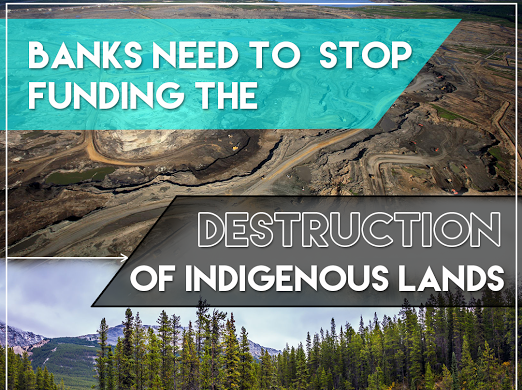
I know a few states and local governments, in America and abroad, have been publicly divesting their pension and investment funds from oil, gas, and coal companies. Personally, I am divesting my 403b from all negative climate investments, and attempting to steer clear of banks and companies that do business with them. If you’re interested in learning more about how to divest, check out The Guardian, and this super cool step-by-step plan from Fossil Free USA. I am also learning from another member from my 350NJ community about what ‘divestment’ means and looks like, so I will keep you updated on that education too!
At the Save the EPA event, I not only received a pocket constitution from NJ 11th for Change, heard from the 350.org head Bill McKibben and other amazing reps for climate, but I also connected with a teen who has an environment club at her school in East Brunswick. It was refreshing and inspiring to see and hear a teen at this event who just asked “I am 15, I am frustrated, and I do not know what to do about it.”
 We adults feel the same way, especially with the current old white dudes in power. I say that, not to play any race card, but because, as a young citizen, I feel like the old white dudes in government are causing all the problems. They are the ones who have their hands in the pockets of oil and coal and gun organizations. They are the ones who have withdrawn logical laws like keeping water clean and increasing background checks on gun owners. I say this to my kids (students) all the time, “I want less old white dudes and people who look like me, and more people who look like you, running our country.”
We adults feel the same way, especially with the current old white dudes in power. I say that, not to play any race card, but because, as a young citizen, I feel like the old white dudes in government are causing all the problems. They are the ones who have their hands in the pockets of oil and coal and gun organizations. They are the ones who have withdrawn logical laws like keeping water clean and increasing background checks on gun owners. I say this to my kids (students) all the time, “I want less old white dudes and people who look like me, and more people who look like you, running our country.”
The Sandy5 events, both the march in NYC and the event in Asbury Park, helped me feel included and motivated me to be more engaged in the environmental health of my local community. It is crazy to think that it has been over 5 years after Hurricane Sandy, as well as the Sandy Hook mass shooting, and it feels that our government has done absolutely nothing, if not the opposite, of trying to be proactive and helpful in either situation/issue. I happily accepted a position as a Steering Group Member for 350 New Jersey, and we have been hard at work formulating plans for divestment from fossil fuels, promoting clean energy, and empowering others to be part of the sunshine and rainbows revolution! (yes, that is my own phrase – patent pending)
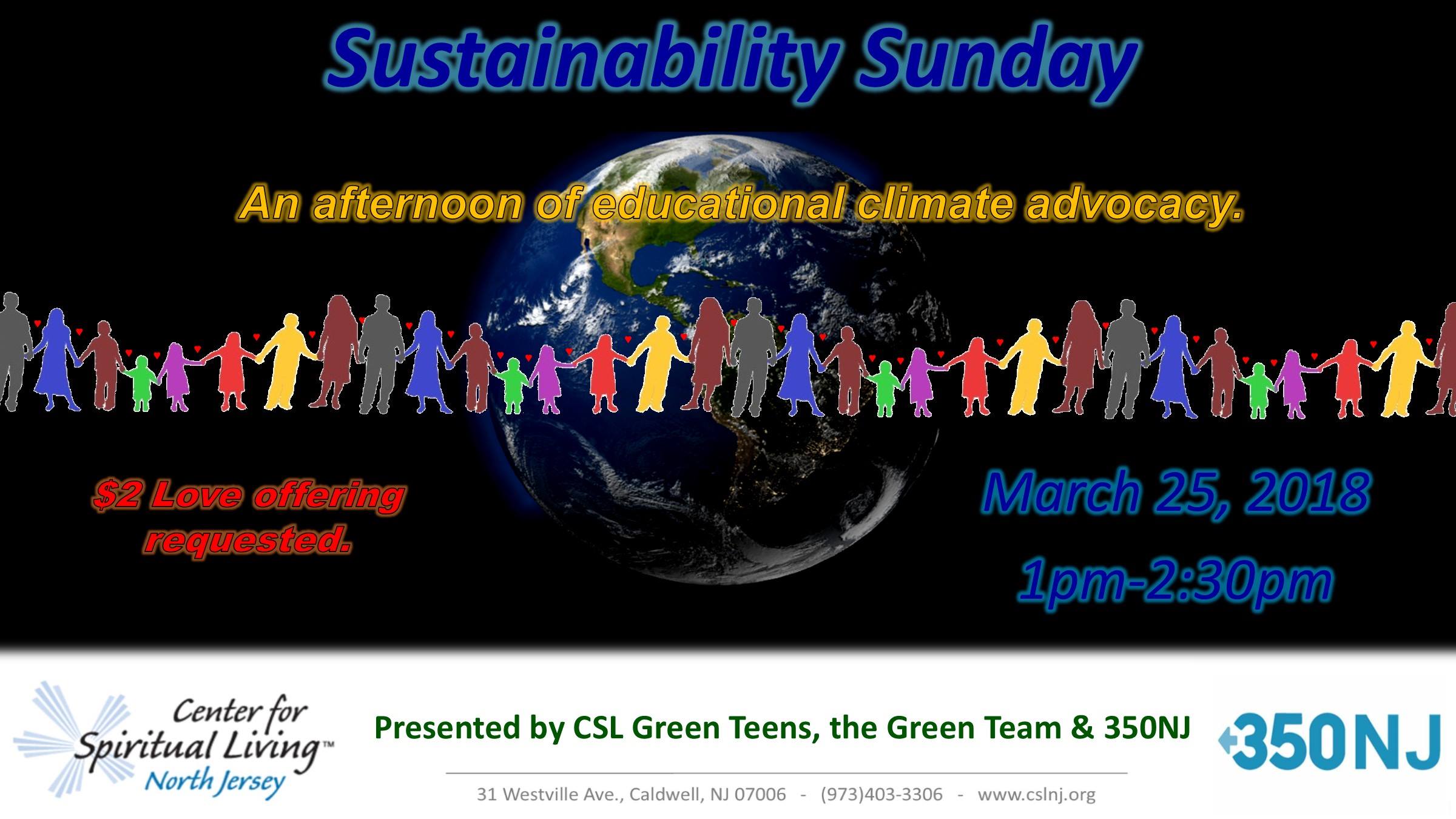
Along with my environmental activism with 350NJ, I continue to be a Green Team member for The Center for Spiritual Living. I am planning an educational and empowering afternoon with the Teen Group centered around the destructiveness of consumption and learning to go Zero Waste. Future posts will also include more about this event, and you can also check out the Facebook event here! It is super exciting to see big names like the NFL and United Nations starting to take a stand against single use waste and landfills! If they can do it, so can you!
On January 16, 2018 I started my first day as a teacher at Rafael Hernandez School of the Performing Arts in Newark. To say this classroom experience has been mind-blowingly inspiring is an understatement. I have never taught in a standardized testing grade where students actually take the PARCC, a standardized state assesment, instead of the DLM, an alternative standardized assessment.
Even though there is added stress and paperwork for those (in my opinion, pointless) fill-in-the-bubble tests, my students are super engaged and enthusiastic about the lessons and activities I bring to the table. I get to talk to my students about mindfulness, chakras, planting and living things, as well as social issues like racism, equal rights, and gun control. The students are developing their skills in debating, hypothesizing, leadership, and citizenship.
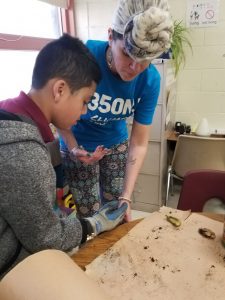 There are SO many projects that I am planning in my room from now until June. One of them is making a classroom community garden. Another is teaching my students to code. Another is empowering them to become advocates for themselves. Of course, my students will always be learning how to better speak for the trees too! I am super grateful for all who donated to my Donors Choose grant so my students and I can explore and increase our funds of knowledge, in these and many more projects to come!
There are SO many projects that I am planning in my room from now until June. One of them is making a classroom community garden. Another is teaching my students to code. Another is empowering them to become advocates for themselves. Of course, my students will always be learning how to better speak for the trees too! I am super grateful for all who donated to my Donors Choose grant so my students and I can explore and increase our funds of knowledge, in these and many more projects to come!
In honor of Black History Month, I would like to present a lesson I did with my students over two days. This lesson is not related to the above video blog reflection, but I find it is an important topic to discuss. We had been discussing racism and what racial profiling was, and they learned firsthand that it lasts a lifetime and unfortunately it still happens today. I found an article on Reddit about “The Kissing Case” and a friend suggested I listen to a short NPR podcast about the follow up. Top that off with me reading about a young black man being racially profiled at an Old Navy that same week, we had a few lessons about racism in America! (this is a sarcastic exclamation point, there is no enthusiasm in racism)
Lesson: What is Racism?
Objective: You will identify and define racism as “Judgment of another person or group of people by religion, skin color, etc.”
Vocabulary: racism, racial profiling, revolutionary love
Suggested book: Love Will See You Through by Angela Farris Watkins
Essential Questions:
- What is racism?
- What does it look and sound like?
- Do you think you have ever been racially profiled? Have you ever seen it happen?
Materials:
- Journal
- pencil/writing utensil
- Chromebook (my school uses Google Classroom)
- SMARTboard
- Wikipedia of The Kissing Case
- NPR – The Kissing Case and the Lives it Shattered
- Any other current media on individuals who experience racial profiling. I used the one about the young man in Iowa who was profiled at Old Navy, but you can do any one. This can lead into many topics, and even a thematic unit, about racism.
- other supportive visuals
Procedure: Introducing a strong topic like racism always depends on the child’s funds of knowledge. What they already know, or don’t know, about racism, will help guide you into talking about the history of racism in your country.
After asking what they know, ask “Do you know The Kissing Case?” and see their confused faces. After about 15 seconds of entertainment, explain to them a short synopsis of the case. My class is very discussion-filled, it is wonderful to hear their explanation of what happened and their questions about why. It definitely nice for them to react surprised when I tell them there used to be a time where someone who looked like me wouldn’t teach someone who looked like them, or that other races couldn’t get married or even drink from the same water fountain.
The second day, I reviewed what they learned and discussed about the Kissing Case, then I had them listen to the 3 minute Kissing Case follow up podcast from NPR. We go into how the systemic social issue of race leaves a lasting mark on its victims. I then showed them the videos/article of the young man in Iowa racially profiled at Old Navy (unfortunately, this can be substituted with a plethora of other current racial profiling issues) and we discussed how we can change this issue.
The biggest takeaway in my classroom, through any lesson that I do, is to give my kids the knowledge and strength to know that their words are important. Words have more meaning when you incorporate revolutionary love and revolutionary action to them. The only way to change something we don’t like is to first talk about it, discuss it, and then put our solution-words into action.
I really was drawn to this idea of “revolutionary love” that Dr. King had, and I defined that in my classroom as feeling so passionately about a cause or issue that you create positive change, or a revolution. Racism continues to be an issue in this country, and I want my kids to understand that just because they act or look different from someone else, does not mean they, or anyone else, is better or worse than another person. I hope that if my kids ever saw racism happening that they would speak up and tell a person, kid or adult, that it is wrong.


